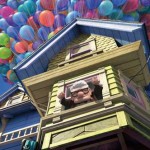Environment Shapes Experience
What do we not see?
This coming weekend the Whitney Museum of American Art will open its new location at 99 Gansevoort Street in NYC’s meatpacking district.
The pre-opening was this past weekend and a couple good friends went enabling me to get the inside scoop while maintaining our extremely suburban lifestyle of mulching, painting fences, attending lacrosse games and stocking up at Costco.
Two things struck me.
The ceiling height far surpasses the old space allowing for mammoth sculptures, paintings and large-scale art installations to be displayed. This raised a few bizarrely innocuous but unexpectedly far-reaching questions for me.
How has ceiling height limited artistic expression? How have artists been forced to reduce their vision to fit the space of what popular culture could hold? And how has this reduction in imagination shaped our experience of art and the views it seeks to express.
What ceilings does our culture have now that we cannot see?
The museum’s opening exhibit is entitled: America Is Hard to See. Indeed it is. It’s hard to see any environment you are in without being able to step outside of it.
How this relates to the Whitney and the journey of American art interests me. But I am far more concerned with how it relates to our personal and collective journeys as citizens of this country.
How does the environment we can’t see affect our day-to-day experience?
I don’t know about you but I find myself, more often than I’d like, revved up without an actionable strategy for how to relax. Sure, I can sit down, read a magazine, go for a walk but my nervous system is still churning through three thousand thoughts.
I seem to be in STUCK ON mode.
I am hyper-alert.
How will I reschedule this given the realities of that? How will I parent in a way that builds resilience without breaking down confidence, encourages toughness without compromising sensitivity?
How do I balance the shoulds with the wants, the have-to-haves with the happy-to-haves?
The list loop is endless and everyone’s got one.
Even when I’m no longer cognitively engaged with a task, I still walk around intensely focused– my eyes fixated on whatever is directly in front of me. My peripheral vision and willingness to divide or soften my attention is limited.
According to clinical psychologist and trauma expert, Steve Hoskinson, the set point of the average modern nervous system hovers around the fight or flight response.
In other words, the low to medium grade state of anxiety we experience has become so pervasive that it’s the “new normal.”
Our nervous systems are wrecked.
And if our interior environments are this out-of-whack, how do we manage the outer ones? We are so entrenched in this non-stop, go-go-go productivity-efficiency environment it’s hard to see it clearly.
According to Mindful Schools Program Director, Chris McKenna, “Our biological system gets stuck in an oscillating cycle between various forms of stress arousal and a deeply under-resourced state of exhaustion.”
How does this effect the upcoming generation? What kind of invisible environments are we unintentionally creating for our children?
More importantly, how can we recalibrate?
The reasons why these conditions are complex so it would be absurdly reductive to say offer an answer. However, I have found a really good first step that sets me in the right direction.
Look at the bird! Look at the bird!
It’s actually not kidding.
McKenna suggests, “When you are vortexing in, re-orient out.”
Change channels from cognitive to sensory. Re-orient your attention outward. On a tree. A flower. A dog. A sunset.
Redirecting our focus out changes our perception of what’s happening, which changes our reality, which allows us to shift gears.
And find a piece of the calm we seek to offer.





I get it…..Twice today I saw people stopping to photograph fluffy, white blooming trees. Both times, instead of noticing the tree first, I noticed the photographers and thought “clearly I’m moving to fast, who has time to stop and get out of their cars to snap the blooms..”
Hilarious:) Know the feeling well!